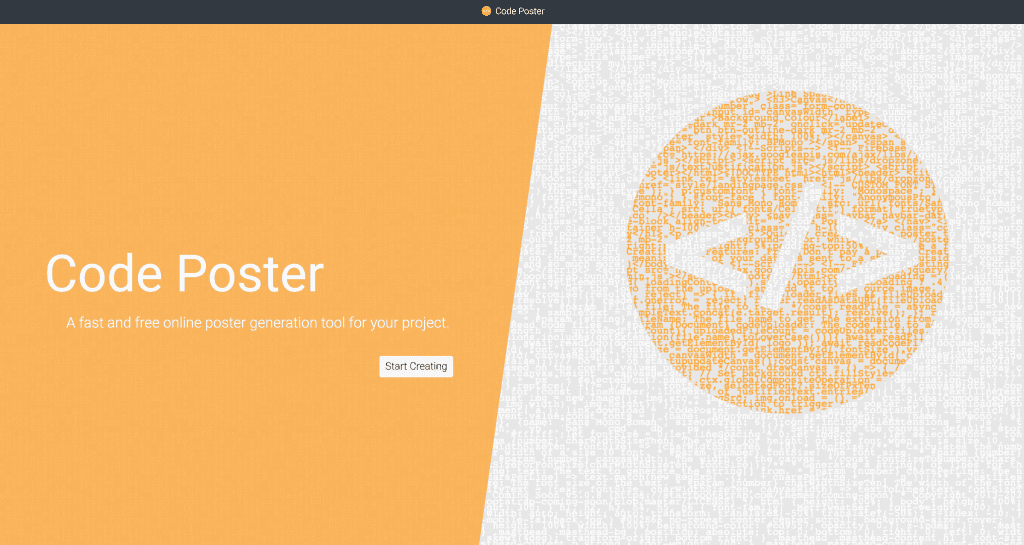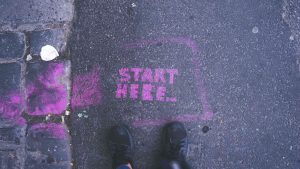The Start of My Solopreneur Journey
Welcome to the first post in a series of blogs where I’ll take you through the highs and lows of my Entrepreneurship journey. I plan on posting an update every week detailing what I’ve been working on to start my solopreneurship dreams. My goal is to provide an insight into what it takes to be a successful entrepreneur (if I ever become one), by sharing the ups and downs of the journey along the way. Whether you are just starting out on your journey or are a seasoned entrepreneur, I hope that you will find my experiences valuable and inspiring. So, without further ado, let me take you on a journey of my entrepreneurship journey so far.
As you don’t know much about me and my entrepreneurship journey yet, I’ve written this introduction post to get you up to speed about my motivations and what I’ve been working on.
How?
Before I get started talking about the projects that I’m working on, you probably want to know how I got introduced to the solopreneurship game in the first place and what motivates me.
I first heard of solopreneurship in August 2022 when I stumbled upon Alex West’s daily updates, where he shared a few sentences of his reflections on starting his own business each day. I’d always thought that starting a business required a massive team and a lot of pre-seeded funding, so it was really inspiring to learn that people were able to make a living from a company that they started themselves.
After reading through all of his posts over the course of a few hours, I was hooked on the dream of quitting my day job and becoming a solo entrepreneur. I had been creating open-source projects for a while, so trying to build a project that could make me some income seemed like a logical next step.
Project 1: Code Poster
After thinking for all of about 2 seconds about what project I wanted to start with, I settled on updating one of my existing projects to accept payments.
The Idea
The idea for Code Poster was born when I was at Uni when one of my friends and I were wanting to create a nerdy poster to show off the first-ever project that we had fully coded. We looked around online and my friend found a poster where the logo was made out of the code for the poster. As we couldn’t find anything online to make the poster for us, my friend ended up creating the poster on Photoshop, which ended up crashing his laptop multiple times due to the amount of text he needed to add.
About a year later with more projects that I wanted to make posters for, I decided to try to tackle creating a website that could generate the posters for me. After cobbling together a tonne of Javascript and a naff home page, I launched Code Poster on the 28th January 2021 as a free-to-use tool.
After creating the first version of Code Poster, I largely left the site alone with no major updates, marketing or any analytics to speak of. As I hadn’t added any analytics to the site, I’m not sure how many visitors the project received.

The Refresh
After getting inspired by Alex’s blog posts, Code Poster seemed like the perfect first step to getting stuck into the solopreneur world. After getting the project set up, I got to work giving the homepage for the site a refresh, improving the UX and adding Stripe integration to the site to work as a payment processor.

After about a month of work, Code Poster had a completely new facelift and was ready for launch. Despite having no experience in launching a product, I managed to launch Code Poster on Product Hunt and received 5 project followers and a tonne of traffic to the page. Although these numbers aren’t great and I didn’t make any sales that day, it felt great to have released my first product into the market and to have people actually looking at my site!
Post Launch
As an inexperienced first-time founder who only knew how to code, I expected that I could just sit back and watch as Code Poster launched into an internet success. As such, I started working on other projects (which I’ll discuss later) and largely ignored any form of marketing efforts.
After a month of working on another project, I got a sudden shock when I received my first £5 payment for a poster. While £5 was definitely not going to pay the bills, it gave me the first taste of success that I was looking for in my entrepreneurship journey.
Throughout the following months, Code Poster continued to slowly make sales and has now made me the grand total of £50 in the last 6 months. While this obviously isn’t going to be replacing my full-time job any time soon, having the first project that I had created be successful was a really enjoyable experience, and made me even more excited to try and launch new projects
Project 2: Status Hive

After launching Code Poster, I wasted absolutely no time in developing a new application called Status Hive, which monitored server uptime and created beautiful status pages. The project was inspired by my own experiences at work, where I was having to use a relatively buggy and expensive app to monitor the uptime of our applications.
Without any market research or conversations with anyone else who was in the industry, I blindly started developing the application that met the requirements that I wanted as I was the target audience right?!?
Wrong.
After spending close to 4 months (from October 2022 to late January 2023) developing the application, I finally released the product to the world. To no one watching. While functionally the application worked really well and hit all of the key aims that I had built it for, I had no one in the wings waiting and excited to use my product.
My Marketing Attempts
After launching the product, I decided that I needed to actually try to market the product in order to get some attention. I reached out to some of my industrial contacts, posted on some relevant Reddit threads and got in contact with some fellow solopreneurs to try and get them to be interested in the project. While I did manage to get a few free plan signup, no one purchased or continued to use the app after a few days.
While most people I contacted weren’t interested at all in the solution, the people that were, gave me the same piece of feedback time and time again: “I use another app that works well for me”. After a bit of research, I discovered hundreds of other businesses that provided excellent uptime monitoring and status page solutions, with many more features than I could ever create and at a much cheaper price than I could offer at the start.
Over the following few months, I continued to try and sell a subscription to Status Hive, however eventually I decided to give up and sunset the project at the start of April 2023 due to the lack of interest.
My Learnings
Despite this project being a complete failure in terms of starting a business, it did teach me a lot of good lessons that I needed to learn:
- Perform market research before developing anything
- Talk to potential clients and get a few people signed up in advance before you get started
- Have a solid marketing plan before starting your business
- Keep development time as short as possible when you start out – a small feature set is better than no users
Project 3: Solo Innovator

After learning these core entrepreneurship lessons the hard way, I decided that I should spend some time learning how I should actually go about starting a business. While looking up advice for starting a business and researching the tools and methods for getting a company off the ground, I realised that there wasn’t a single site that contained everything that you needed to know about starting a business yourself.
And that’s where the idea for this site, Solo Innovator, was born. As I was already making notes about the entrepreneurship topics that I was researching, it seemed like an easy way to help out the community by creating a centralised hub of entrepreneurship learnings and resources.
The site still hasn’t made me a penny, as my viewership numbers are way too small to be partnered with AdSense. However, the site has started to gain some traction and I’ve had a few emails from people who have been helped by the information that I’ve shared here, which is a definite plus in my book!
In addition to this, the extra research has definitely identified a number of things that I hadn’t even considered about starting a business and has also helped me learn a lot about SEO, which I’m sure will be useful for my project later down the line.
The Future of Solo Innovator
When I created the Solo Innovator blog in March 2023, I set myself the target of writing 30 blog posts in 2 months so that I could quickly get up to scratch with the fundamentals of starting a business and create a good base of content for the blog.
After 2 months of trying to research and write a blog post every working day alongside my day job, I managed it! I ended up taking a break from writing for a few weeks after that to prevent myself from burning out on blog writing and to work on another project (see below).
I’m back now (this is my first post after my break) and I’m intending to continue writing informational-style blog posts (all be it at the slower rate of once or twice a week) and a weekly reflection post on what I’m doing to reach my goal of becoming a solopreneur. You can see my future updates here.
I’m hoping that the combination of these 2 types of posts will be useful to other solopreneurs and will also help to record my learnings as I embark on my entrepreneurship journey.
Project 4: Post Crunch

After writing 20 or so posts on Solo Innovator, I started noticing how difficult it was to keep track of the blog posts that I had written and the posts that I still wanted to write and research. I couldn’t find a good solution to this problem, and as luck would have it, Niche Site Lady sent an email to her alias showing a spreadsheet that allowed you to track current and existing posts.
While that did seem like a good solution, I didn’t really want to waste my time entering all of the information manually into this spreadsheet. I thought that if I didn’t want to enter this information manually for my blog with only 20 posts, someone with hundreds of posts would definitely be put off by this.
Learning from the mistakes I made when creating Status Hive, I started researching other tools and couldn’t find any! I also contacted 3 big names from the blogging community about the idea and a few other features that I was thinking about implementing and all of them responded letting me know that they would be interested in paying for my product.
Post Crunch Development
I spent the next month working hard to create the application, which I named Post Crunch. After this month, I had a working MVP (minimum viable product) that did everything that I had discussed in my emails to the members of the blogging community. I’d left out anything that wasn’t vital to the core functioning of the app in an attempt to reduce the amount of time that I spent developing the product.
Where Is Post Crunch Now?
I launched the MVP for Post Crunch in the last week of April 2023 and made contact with the members of the blogging community that I had reached out to before developing the product. Unfortunately, I haven’t been able to get a response from any of the members of the blogging community that I had been in touch with, however, I’m going to get back in touch with them over the next week, so we’ll see if I have something to report back on soon!
Since the latter half of last week, I’ve started sending emails to potential clients as part of my cold email campaign. My process is to plug a blog into Post Crunch’s link checker, find all of the broken links on the site and send an email giving an example of a broken link, reporting how many broken links we’ve detected, and explaining the potential issues that can arise from having broken links on your site. To date, I’ve sent out 13 cold emails using this method. Over the next few weeks, I’m planning to continue to tweak this process so that I can get in contact with more site owners and make the process more efficient.
I’ve also been working on creating a few core articles for the Post Crunch blog. As a blogging tool, I thought that the site should definitely have at least a handful of posts on the site to start with. I’ve only just released the articles, so I’m not expecting them to bring in any traffic for the next little while, but hopefully, in the next few months, I’ll start to see some traffic from these.
What I’m Working On Next Week
So now that you’re all caught up on what I’ve been up to so far on my solopreneur journey, it’s time to explain what my goals are for the next week. As I’m mainly focussing my time on Solo Innovator and Post Crunch at the moment, I’ve only set myself goals for these 2 projects.
Solo Innovator
As this is my first week back on Solo Innovator after a bit of a break, there are quite a few different things that need attending to. First of all, I need to get back into the swing of blogging. My aim is to write one informational post in addition to the post you’re reading now and the end-of-week summary.
As I’m creating this new section on the blog (my solopreneur journey), there’s a good amount of housekeeping that I need to do to ensure that the site points you in the direction of the most relevant posts. In addition to this, Post Crunch has identified a few new broken links and pages that need my attention on the blog. I’m going to keep working on these over the next few days to make sure this blog is in ship shape!
Post Crunch
My focus on Post Crunch at the minute is on marketing. I need to get more users onto the platform quickly so that I can justify spending more time working on the project and continuing its development. My main source of marketing right now is my cold outreach programme. I’m going to keep working on this over the coming days, aiming to reach out to around 50 different blogs. This will allow me to identify whether this marketing method is working and will allow me to tweak the cold email template that I’m sending out.
As well as this, I’m going to get back in contact with the bloggers that I emailed before I started developing the application. As they were already interested in the product, I’m hoping that I’ll be able to get them on board, as they could provide some free marketing if they like the product.
Conclusion
Congratulations if you got this far through the post! You’re now up to speed on the current developments of my solopreneur journey. I’ve got a lot to achieve before I write up my week review here on Friday (3 days’ time!). My end-of-first-week write-up is now live here if you want to read it!
Be sure to check out the other posts in this series to learn more about my solopreneur journey.







